Dance-Performance “Doppelganger” cycle 1, “Ningyō Jōruri 人形浄 瑠 – 璃” at the “Kre:π performance art festival”
H.A.U.S. at the “Kre:π performance art festival” at Banska Bystrica, Slovakia, 30.8.-2.9.2018, Dance-performance and Discourse.
Dance-performance by Eva and Machina 1.9., 20h
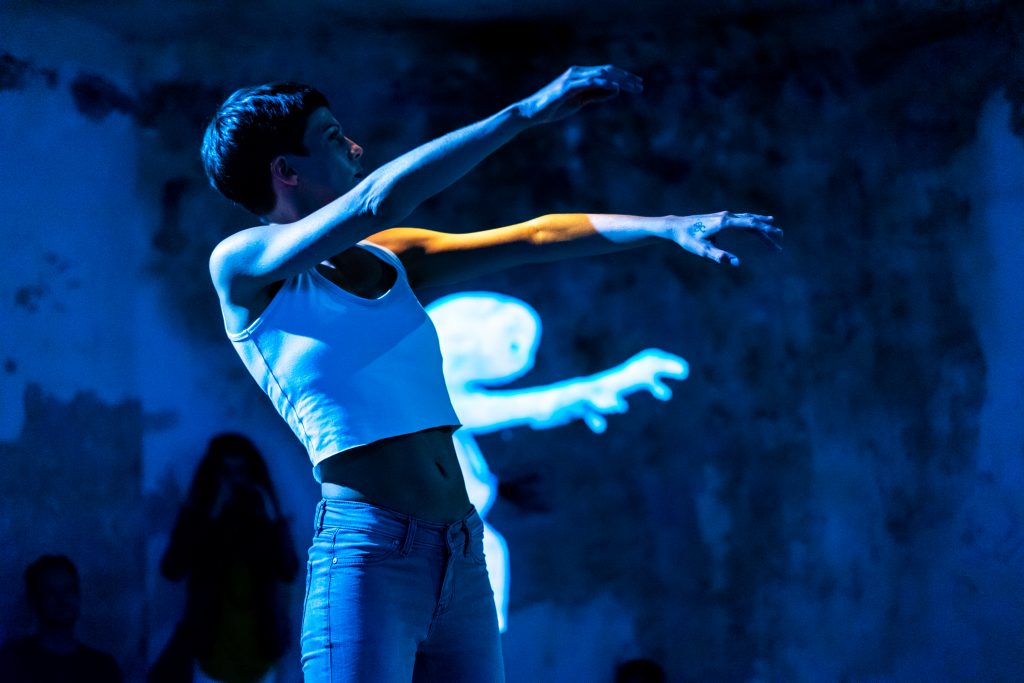
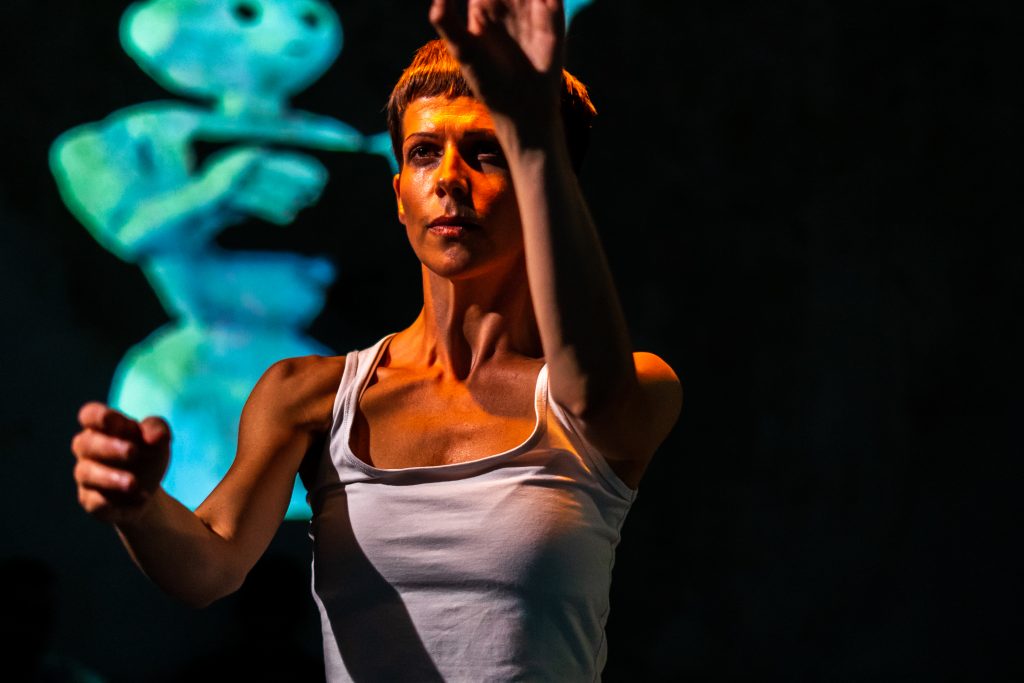
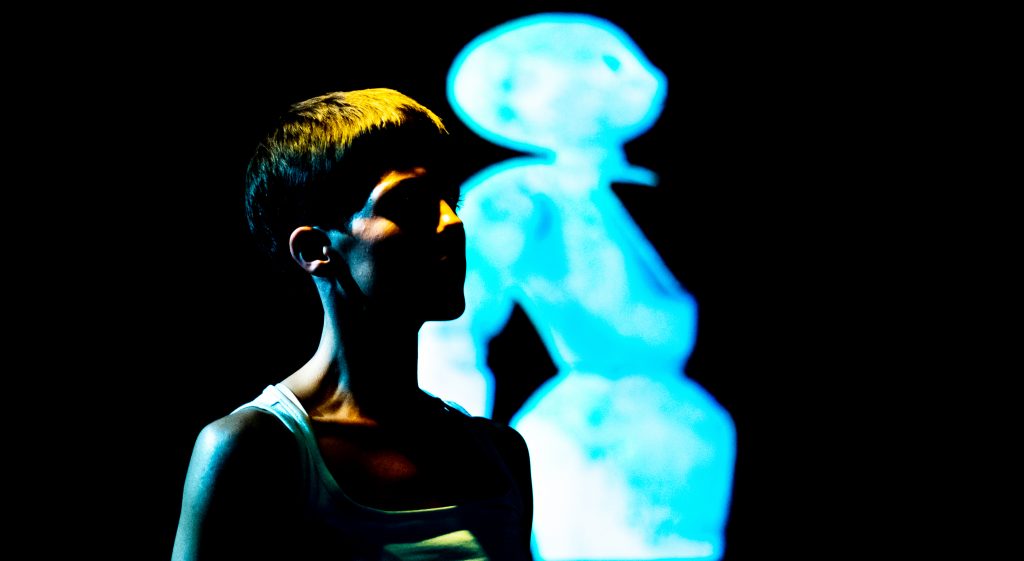

Teaser video
Discourse “ENTROPY – and the reconstruction of the human” by Christoph and Oliver, H.A.U.S. with Thomas Jelinek (Nomad Theater), Aiko (Kazuko Kurosaki) and the festival audience 1.9., 18:30
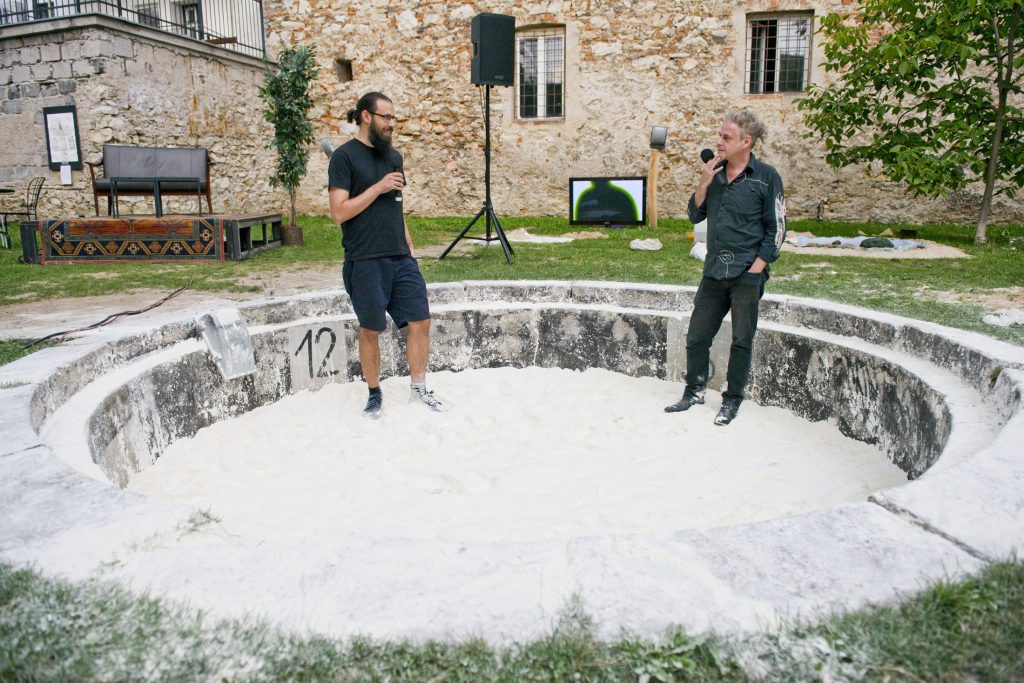
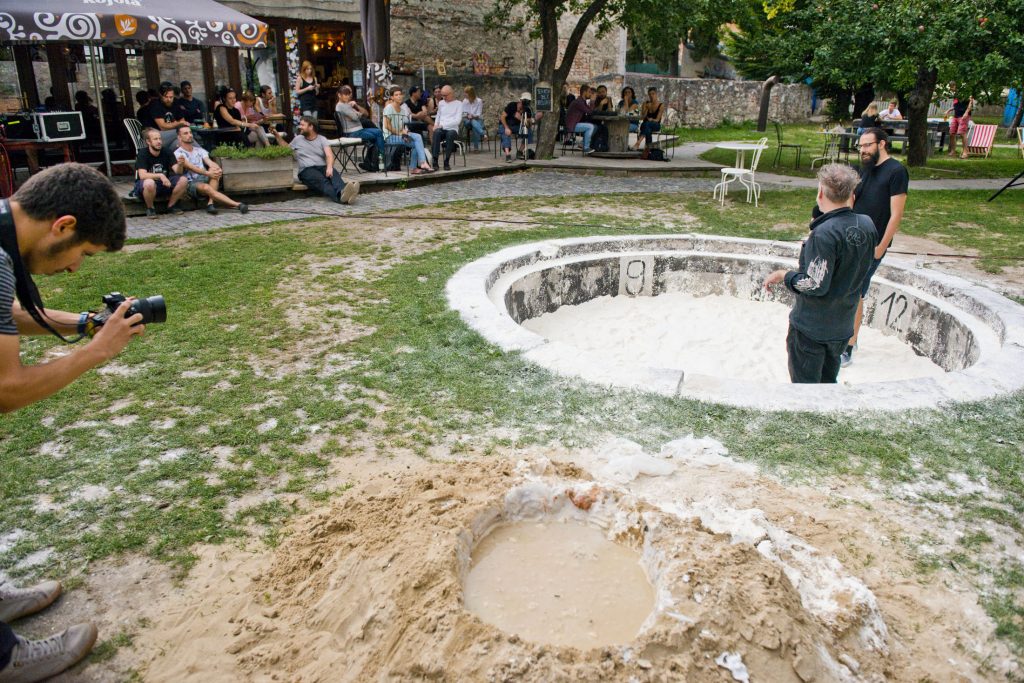
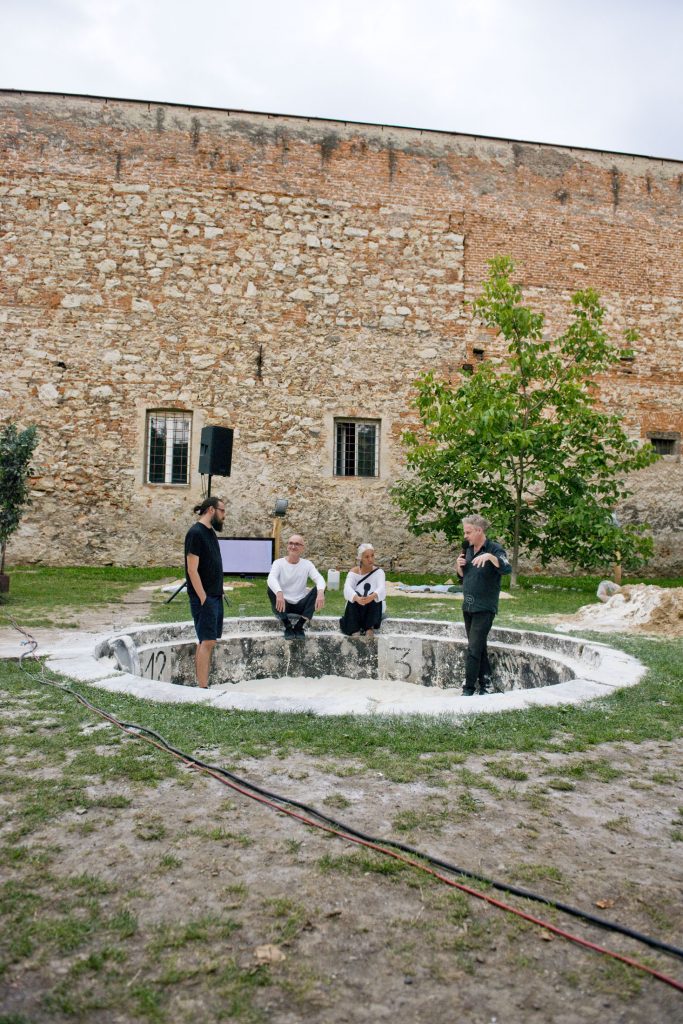
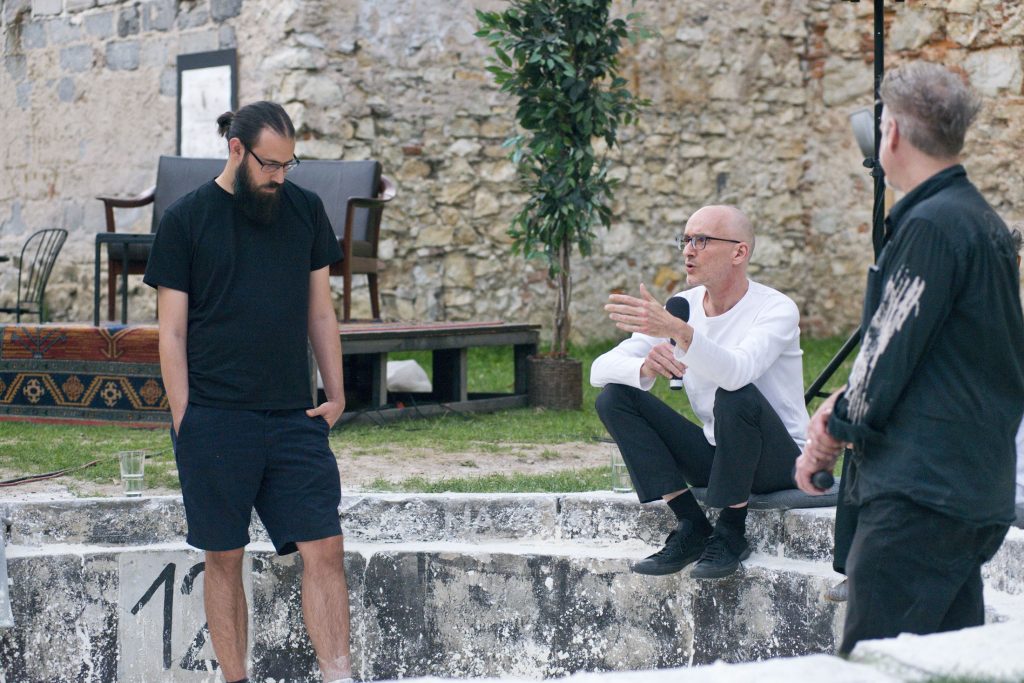
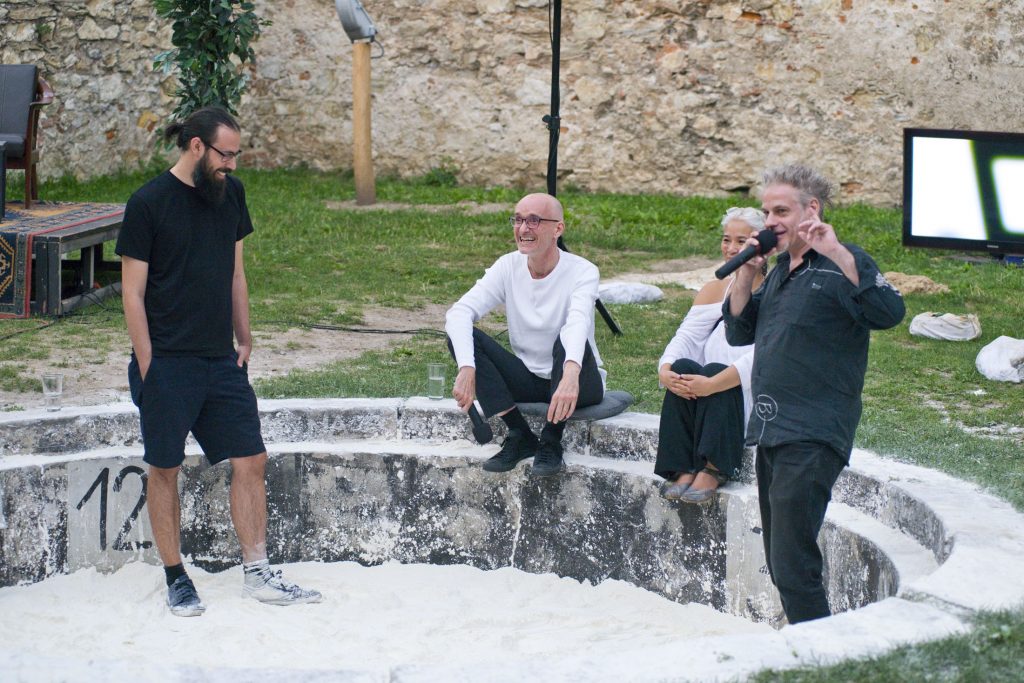
Many thanks to the great and interested audience, especially for sharing you thoughs with us in the interview! Special thanks to the “Kre:π” people for the hospitality, to thomasJ for precise and generous curation, and everybody at the Zahrada Cultural Center for the wonderful days there!
Cooperation
Transdisciplinary Research Group H.A.U.S.
(Dance Performance & Choreo – Eva Maria Kraft,
Robot Programming Christoph Müller,
Scientific & Artistic Direction – Oliver Schürer)
Delighted To Cooperate With
Performing Direction, Dramaturgy & Set – Thomas J. Jelinek
Soundscapes & Music Composition – Jorge Sánchez-Chiong
Multimedia – Peter Koger
(a Nomad Theater Production)
Concept Ningyo Joruri 人形浄 瑠 – 璃
The dance performance discusses two cultures that, without any mutual influence, at the same time develop an obsession with artful representations of humans by mechanical means. “Doppelganger” introduces and inverts the relation of puppet and puppeteer from Ningyō Jōruri (Japanese puppet-play drama). A humanoid robot ‘(puppeteer), model Pepper by Softbank Japan, will control one human dancer, Eva-Maria Kraft (pupet).
Inspired by Ningyō Jōruri (also known as Bunraku theatre), the performance “Ningyō Jōruri” dramatizes the text “Humans Are Machines of the Angels” (1785) by author Jean Paul.
Intelligent technology is about to change cultural spaces established since generations. Most prominently among the various new technologies are humanoid robots. Supposed to be functional in assistance and care, they enter private and intimate spaces of humans. Which cultural changes of those spaces should we pursue? What kind and what quality of relationship can we have with them?
First concept to the “Doppelgaenger” cycle;
a dance performance in posthuman flux
Oliver Schürer
The play focuses on the production and the negotiation of cultural space between human and humanoid under mutually entangled influence. In being urged to do so, they live the dissolution between subject and object – the posthuman condition of the human reflected and resonated by the doppelganger.
The format of performance will be challenged as a research method, that would elude the grasp of other formats. It is introduced to preserve crucial aspects of cultural spaces such as presence, the continuous, the ephemeral, the temporal, the spontaneous and the atmospheric, to probe the abyss of mutual resonance and reflection.
While the performance is working with modes of expression inspired by Bunraku puppet theatre, it dramatizes the text “Humans Are Machines of the Angels” (1785) by Jean Paul. His dark satire reflects on the topic of android automata, of the time with Paul’s literary topic of the Doppelgaenger. With the performance, the relatedness of puppet and the puppeteers allows to discuss dense, intimate relations of guidance and perception, like seeing with one’s hands, abstracting by observing or the harmony of dynamic equilibrium in caring and being cared for. Cultural Space unfolds in permanently keeping up dynamic equilibria, with both, treating the puppet as mere artefact as well as animated matter according to situational context, and, the mutual exchange of playing/perceiving and being played/perceived to discuss potentials of human-humanoid relations.
But while discussing the actor status between puppet or puppeteer in the performance, both find themselves increasingly indistinguishable from the posthuman flux among the mutual Doppelgaengers.